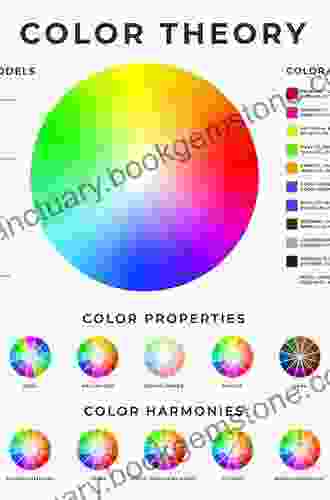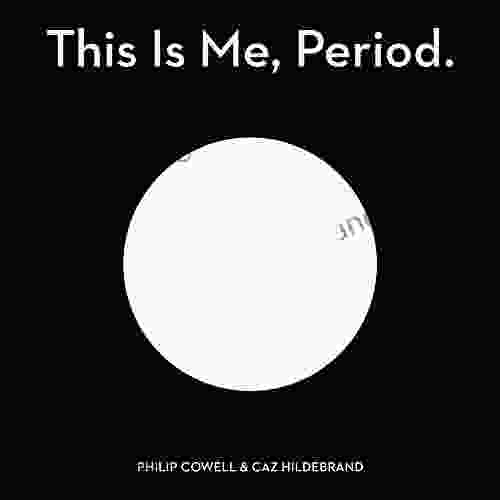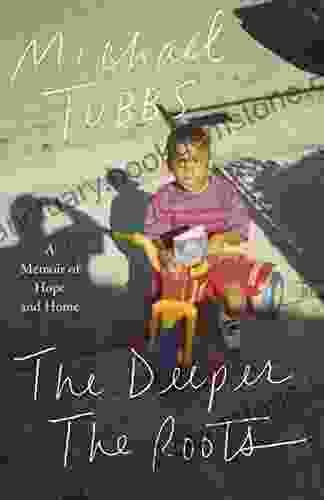A Comprehensive Guide to Contemporary Color Theory and Its Applications

4.6 out of 5
| Language | : | English |
| File size | : | 18541 KB |
| Screen Reader | : | Supported |
| Print length | : | 224 pages |
| X-Ray for textbooks | : | Enabled |
Color is a powerful force that can influence our thoughts, feelings, and behavior. It is an essential element of design, art, marketing, and branding. A well-chosen color scheme can make a website more user-friendly, a product more appealing, and a brand more recognizable.
Contemporary color theory provides a framework for understanding how colors work together. It is based on the latest scientific research, and it incorporates insights from psychology, neuroscience, and design theory.
In this article, we will explore the principles of contemporary color theory and its applications in various fields. We will also provide tips on how to use color effectively in your own work.
Principles of Contemporary Color Theory
Contemporary color theory is based on three main principles:
- Color is a form of light. When light hits an object, some of the light is absorbed and some is reflected. The reflected light is what we see as color.
- Colors can be arranged in a three-dimensional color space. The three dimensions of color space are hue, saturation, and lightness. Hue is the pure color, such as red, blue, or green. Saturation is the intensity of the color, such as bright red or pale pink. Lightness is the amount of light or dark in the color, such as light gray or dark black.
- Colors interact with each other. When two or more colors are placed next to each other, they create a new visual effect. The way that colors interact depends on their hue, saturation, and lightness.
Color Models
There are several different color models that are used in contemporary color theory. The most common color models are the RGB model, the CMYK model, and the HSL model.
- RGB model: The RGB model is used for displaying colors on computer screens. It is based on the three primary colors of light: red, green, and blue. By combining these three colors in different proportions, it is possible to create a wide range of colors.
- CMYK model: The CMYK model is used for printing colors. It is based on the three primary colors of ink: cyan, magenta, yellow, and black. By combining these four colors in different proportions, it is possible to create a wide range of colors.
- HSL model: The HSL model is based on the three perceptual attributes of color: hue, saturation, and lightness. Hue is the pure color, such as red, blue, or green. Saturation is the intensity of the color, such as bright red or pale pink. Lightness is the amount of light or dark in the color, such as light gray or dark black.
Color Harmony
Color harmony is the pleasing arrangement of colors. There are several different ways to create color harmony, including:
- Analogous colors: Analogous colors are colors that are adjacent to each other on the color wheel. They create a harmonious effect because they share similar hues.
- Complementary colors: Complementary colors are colors that are opposite each other on the color wheel. They create a high-contrast effect that can be very eye-catching.
- Triadic colors: Triadic colors are three colors that are evenly spaced around the color wheel. They create a balanced and harmonious effect.
- Monochromatic colors: Monochromatic colors are different shades of the same color. They create a subtle and sophisticated effect.
Color Schemes
A color scheme is a group of colors that are used together in a design. There are many different types of color schemes, including:
- Warm color schemes: Warm color schemes use colors that are associated with warmth, such as red, orange, and yellow. They can create a feeling of energy and excitement.
- Cool color schemes: Cool color schemes use colors that are associated with coolness, such as blue, green, and purple. They can create a feeling of peace and tranquility.
- Neutral color schemes: Neutral color schemes use colors that are not associated with any particular temperature, such as black, white, and gray. They can create a feeling of sophistication and elegance.
- Complementary color schemes: Complementary color schemes use colors that are opposite each other on the color wheel. They can create a high-contrast effect that is very eye-catching.
Color in Design
Color is an essential element of design. It can be used to create a variety of effects, such as:
- Attract attention: Bright and contrasting colors can attract attention. They can be used to highlight important elements of a design, such as a call to action button.
- Create a mood: Colors can create a variety of moods, such as happiness, sadness, excitement, or peace. They can be used to create a specific atmosphere in a space.
- Convey information: Colors can be used to convey information. For example, red is often used to indicate danger, while green is often used to indicate safety.
- Organize information: Colors can be used to organize information. For example, different colors can be used to group related items together.
Color in Art
Color is also an important element of art. It can be used to create a variety of effects, such as:
4.6 out of 5
| Language | : | English |
| File size | : | 18541 KB |
| Screen Reader | : | Supported |
| Print length | : | 224 pages |
| X-Ray for textbooks | : | Enabled |
Do you want to contribute by writing guest posts on this blog?
Please contact us and send us a resume of previous articles that you have written.
 Best Book
Best Book Page Flip
Page Flip Bookshelf
Bookshelf Literary loom
Literary loom Chapter
Chapter Bookish
Bookish PageTurner
PageTurner Bibliophile
Bibliophile Story
Story Inkwell
Inkwell Bookworm
Bookworm Labyrinth
Labyrinth Plot Twist
Plot Twist Prose
Prose Paperback
Paperback Storyteller
Storyteller Sanctuary
Sanctuary Fiction
Fiction Reading
Reading Chronicle
Chronicle Read
Read Angus Donald
Angus Donald Jill Braden
Jill Braden Charla Krupp
Charla Krupp Andrew Haslam
Andrew Haslam Kevin Grange
Kevin Grange Anita Heiss
Anita Heiss Erin Lewis Fitzgerald
Erin Lewis Fitzgerald Jocelyn Harewood
Jocelyn Harewood Anita Nipane
Anita Nipane Holly Moss
Holly Moss Andrew Bostock
Andrew Bostock Fern Michaels
Fern Michaels John Patrick Bray
John Patrick Bray Larry Silverberg
Larry Silverberg Sherry Ginn
Sherry Ginn Patrick Smithwick
Patrick Smithwick Angelo Colorni
Angelo Colorni Haley Hoover
Haley Hoover Kianna Alexander
Kianna Alexander Andrea Pflaumer
Andrea Pflaumer James T Deshields
James T Deshields Monica Moody
Monica Moody Paul Robert Walker
Paul Robert Walker Milton Glaser
Milton Glaser David Hampshire
David Hampshire Andreas Deja
Andreas Deja Ann Cleeves
Ann Cleeves L T Ryan
L T Ryan Stacey L Nash
Stacey L Nash Michael Howard
Michael Howard Dita Von Teese
Dita Von Teese Shel Perkins
Shel Perkins W H Bartlett
W H Bartlett Luis Carlos Montalvan
Luis Carlos Montalvan Melissa Riddell
Melissa Riddell Anna Kirtlan
Anna Kirtlan Angela Wolf
Angela Wolf Siren
Siren Jamila Jasper
Jamila Jasper Frederick Stirton Weaver
Frederick Stirton Weaver Michael Asher
Michael Asher Anne Pannecke
Anne Pannecke Gavin Ambrose
Gavin Ambrose Angelico Chavez
Angelico Chavez Andrew Johnson
Andrew Johnson Andrew Meier
Andrew Meier Elaine Welteroth
Elaine Welteroth Rachel Rubin Wolf
Rachel Rubin Wolf John Gilstrap
John Gilstrap Cion Lee
Cion Lee Jason Sommer
Jason Sommer Margaret Wander Bonanno
Margaret Wander Bonanno Ys Publishing
Ys Publishing Andrew Marble
Andrew Marble Barbara Sillery
Barbara Sillery Andrew Vaillencourt
Andrew Vaillencourt Andrew Osmond
Andrew Osmond Robert Alan Brookey
Robert Alan Brookey Angela Marie Moulton
Angela Marie Moulton Dominique Auzias
Dominique Auzias Louise Egerton
Louise Egerton Angie Martinez
Angie Martinez Quincy Jones
Quincy Jones Mia Sheridan
Mia Sheridan Angus M Gunn
Angus M Gunn Natasha Solomons
Natasha Solomons Anna Todd
Anna Todd Tiffany L Warren
Tiffany L Warren Angie Daniels
Angie Daniels Anne C Heller
Anne C Heller Regine Abel
Regine Abel Glenn Adamson
Glenn Adamson Anna Starmer
Anna Starmer Bridget Alsdorf
Bridget Alsdorf Andrea Jackson
Andrea Jackson Angie Grace
Angie Grace Howard Thurston
Howard Thurston Andrei Codrescu
Andrei Codrescu Mary Robinette Kowal
Mary Robinette Kowal Josh Hanagarne
Josh Hanagarne Doris Kennedy
Doris Kennedy Eric Seale
Eric Seale E B Sledge
E B Sledge Ronnie Smith
Ronnie Smith Andrew Darby
Andrew Darby Jeremy Mercer
Jeremy Mercer Kathryn Wilder
Kathryn Wilder Andrew Carroll
Andrew Carroll Gabrielle Moss
Gabrielle Moss Camil Flores
Camil Flores Jeffrey Chipps Smith
Jeffrey Chipps Smith Kat Chow
Kat Chow David Nees
David Nees Anjali Enjeti
Anjali Enjeti Jarrett Brandon Early
Jarrett Brandon Early Andrew Mcmahon
Andrew Mcmahon Fred Botting
Fred Botting Angus Roxburgh
Angus Roxburgh Jonathan Rauch
Jonathan Rauch Dina Nayeri
Dina Nayeri Drew Kwong
Drew Kwong Lynda Vaughn
Lynda Vaughn Anna Koliadych
Anna Koliadych Kate Frost
Kate Frost John Sugden
John Sugden Yossi Maimon
Yossi Maimon Nicole Grotepas
Nicole Grotepas Clemantine Wamariya
Clemantine Wamariya Andrei Besedin
Andrei Besedin Graeme Davis
Graeme Davis Scott Bartlett
Scott Bartlett Kindle Edition With Audio Video
Kindle Edition With Audio Video Fred Saberhagen
Fred Saberhagen Andy Davidson
Andy Davidson Anna Salton Eisen
Anna Salton Eisen Maxim Peter Griffin
Maxim Peter Griffin Andrew Graham Dixon
Andrew Graham Dixon Ed Duncan
Ed Duncan Lyonel Feininger
Lyonel Feininger Carole Jackson
Carole Jackson Daniella Weiss Ashkenazy
Daniella Weiss Ashkenazy Andrew Moor
Andrew Moor Anne Bogart
Anne Bogart Lisa Dickey
Lisa Dickey Zane Lamprey
Zane Lamprey Josie Iselin
Josie Iselin David Blatner
David Blatner Anika Fajardo
Anika Fajardo Ann Blockley
Ann Blockley E M Foner
E M Foner Darrin Duford
Darrin Duford Shellise Berry
Shellise Berry Phoenix Collins
Phoenix Collins Henry Van Dyke
Henry Van Dyke Angelique V Nixon
Angelique V Nixon Ani Trime
Ani Trime Caroline Linscott
Caroline Linscott Anna Badkhen
Anna Badkhen Don Bluth
Don Bluth Susan Ross
Susan Ross Robin Sloan
Robin Sloan Andrew Cunningham
Andrew Cunningham Octave Uzanne
Octave Uzanne Van Lu
Van Lu Shirley Anstis
Shirley Anstis Andrew M Dobell
Andrew M Dobell Andy Southall
Andy Southall Christie Taylor
Christie Taylor Harriet Welty Rochefort
Harriet Welty Rochefort Tetiana Elert
Tetiana Elert Robert Ludlum
Robert Ludlum Walter Foster
Walter Foster Hilary Spurling
Hilary Spurling Sylvia Day
Sylvia Day Carlos Del Amor
Carlos Del Amor Disamis Arcia Munoz
Disamis Arcia Munoz Stephanie Laurens
Stephanie Laurens Dawnie Walton
Dawnie Walton Roman Frister
Roman Frister Lakisha Johnson
Lakisha Johnson Robin Koontz
Robin Koontz B Love
B Love Angel Williams
Angel Williams Lance Esplund
Lance Esplund Anna Goldenberg
Anna Goldenberg Catherine Berry
Catherine Berry Val Wake
Val Wake Denny S Bryce
Denny S Bryce Jane Hamilton
Jane Hamilton Andrew Grant
Andrew Grant Annie Dillard
Annie Dillard Pao Lor
Pao Lor Ann Beaglehole
Ann Beaglehole Angharad Lewis
Angharad Lewis George Kalmpourtzis
George Kalmpourtzis Dorothy Hartley
Dorothy Hartley Sam Fury
Sam Fury Nintendo
Nintendo James Martin
James Martin Andrew Dickos
Andrew Dickos Condoleezza Rice
Condoleezza Rice Andrea Pomerantz Lustig
Andrea Pomerantz Lustig Bernie Marcus
Bernie Marcus Marc Shapiro
Marc Shapiro Andy Mckell
Andy Mckell Mark Henwick
Mark Henwick Laurinda Reddig
Laurinda Reddig Anna Cavallo
Anna Cavallo Anna Hackett
Anna Hackett C Y Croc
C Y Croc Duncan Heath
Duncan Heath Anna Qu
Anna Qu D C Palter
D C Palter John Charles Bennett
John Charles Bennett Nicholas Meyer
Nicholas Meyer Anita Brookner
Anita Brookner C L Parker
C L Parker Andrew Mayne
Andrew Mayne Bill Fawcett
Bill Fawcett Andrew Bowden
Andrew Bowden Jack Gernsheimer
Jack Gernsheimer Kitty Gorrell
Kitty Gorrell Martin Cruz Smith
Martin Cruz Smith Magic Guidebooks
Magic Guidebooks Ernesto Che Guevara
Ernesto Che Guevara Guy Stern
Guy Stern Jane Akshar
Jane Akshar Mike Epps
Mike Epps Kimberly Brock
Kimberly Brock Christine Leteux
Christine Leteux Zachary Lamothe
Zachary Lamothe Rita Moreno
Rita Moreno Cornel West
Cornel West Crystal Daniels
Crystal Daniels Ruskin Bond
Ruskin Bond Michiyo
Michiyo Donald Preziosi
Donald Preziosi Godfrey Baldacchino
Godfrey Baldacchino Tom Sileo
Tom Sileo Anna Pasternak
Anna Pasternak Sarah Ferguson
Sarah Ferguson Michael Punke
Michael Punke Sylvan Barnet
Sylvan Barnet Sara Funduk
Sara Funduk Angelina Jolie
Angelina Jolie David Loud
David Loud Emily Louise Howard
Emily Louise Howard Anna Jean Mayhew
Anna Jean Mayhew Anna Sherman
Anna Sherman Barbara Lasalle
Barbara Lasalle Betty Arnett
Betty Arnett Nina Willner
Nina Willner Caroline James
Caroline James Gary Spetz
Gary Spetz Angie Cruz
Angie Cruz R G Richardson
R G Richardson Emiko Davies
Emiko Davies Wendy Jelbert
Wendy Jelbert Julie Klassen
Julie Klassen Andrea Lee
Andrea Lee Andy Herbach
Andy Herbach Billy Ray Belcourt
Billy Ray Belcourt Legacy Russell
Legacy Russell Kristina Kozak
Kristina Kozak Raymond F Jones
Raymond F Jones Juanitta Baldwin
Juanitta Baldwin Gary Faigin
Gary Faigin Christopher Fowler
Christopher Fowler Kien Nguyen
Kien Nguyen Edward Bellamy
Edward Bellamy Jason Kramar
Jason Kramar D C Robinson
D C Robinson Heather Galler
Heather Galler J D Robb
J D Robb Annabelle Honess Roe
Annabelle Honess Roe Michele Sullivan
Michele Sullivan Tina Brown
Tina Brown Maggie O Farrell
Maggie O Farrell Marie Force
Marie Force Cissy Houston
Cissy Houston Anne Billson
Anne Billson Andrew Juniper
Andrew Juniper Stephen Kurkjian
Stephen Kurkjian L J Martin
L J Martin Katrina Mcpherson
Katrina Mcpherson Charles Bukowski
Charles Bukowski Alex Tannen
Alex Tannen Annalee Newitz
Annalee Newitz Judy Omar
Judy Omar Julie Ann Walker
Julie Ann Walker Andrew Hund
Andrew Hund Andrew Moriarty
Andrew Moriarty Taylor Michaels
Taylor Michaels Rhonda Mcknight
Rhonda Mcknight Diane Esguerra
Diane Esguerra Mark Horrell
Mark Horrell Lonneke Geerlings
Lonneke Geerlings Andy Mcdermott
Andy Mcdermott William J Lederer
William J Lederer Emily Bingham
Emily Bingham Jenny Schwartz
Jenny Schwartz Dominic Roskrow
Dominic Roskrow Kent Babb
Kent Babb J N Chaney
J N Chaney Xander Black
Xander Black John M Olsen
John M Olsen Tim Slessor
Tim Slessor David J Dennis Jr
David J Dennis Jr Andrew Sutton
Andrew Sutton Isabel Allende
Isabel Allende Andy Warhol
Andy Warhol Liz Neves
Liz Neves Jessica Alba
Jessica Alba John C Cranham Dds
John C Cranham Dds Annabel Chase
Annabel Chase Shannon Leone Fowler
Shannon Leone Fowler Anna Mocikat
Anna Mocikat Manuel Huitzilli
Manuel Huitzilli Anna Bartlett
Anna Bartlett Octavio Solis
Octavio Solis Anjelah Johnson Reyes
Anjelah Johnson Reyes Kristina Liu
Kristina Liu Frederic Lombardi
Frederic Lombardi J Bright
J Bright Ann Budd
Ann Budd Scott Thybony
Scott Thybony Patricia Preciado Martin
Patricia Preciado Martin Andrew Karevik
Andrew Karevik Frank Kennedy
Frank Kennedy Anjan Chatterjee
Anjan Chatterjee Ray Scippa
Ray Scippa G J Younghusband
G J Younghusband Andrew Tunstall
Andrew Tunstall Angela D French
Angela D French Angela Hunt
Angela Hunt Royal Horticultural Society
Royal Horticultural Society Anna Corba
Anna Corba John Driver
John Driver Ted Kerasote
Ted Kerasote Andrew Porwancher
Andrew Porwancher Michelle Lee
Michelle Lee Stuart Campbell
Stuart Campbell Anna Stephens
Anna Stephens Edward Seidensticker
Edward Seidensticker Anna M Mazur
Anna M Mazur Terry Brooks
Terry Brooks Shawn Kelly
Shawn Kelly Christopher S Wood
Christopher S Wood Ryan White
Ryan White Marina Benjamin
Marina Benjamin Theodore Annemann
Theodore Annemann Hamish Bowles
Hamish Bowles J B Rosenberg
J B Rosenberg Paul Reps
Paul Reps Ann Marks
Ann Marks Angus Johnstone
Angus Johnstone Anna Deavere Smith
Anna Deavere Smith Fawzia Koofi
Fawzia Koofi Jack Porter
Jack Porter Farha Ghannam
Farha Ghannam Laura Lee
Laura Lee Marilyn Chase
Marilyn Chase Jeb Rosebrook
Jeb Rosebrook Leslie Redhead
Leslie Redhead Danielle Geller
Danielle Geller T J Demos
T J Demos Elizabeth L Block
Elizabeth L Block Andreas Marks
Andreas Marks Denys Johnson Davies
Denys Johnson Davies Ann C Smith
Ann C Smith Flavio Ferrari Zumbini
Flavio Ferrari Zumbini Andrew Parker
Andrew Parker Jean Ann Shirey
Jean Ann Shirey Rob Craig
Rob Craig Nancy Princenthal
Nancy Princenthal Waldemar Bogoras
Waldemar Bogoras John F Mullins
John F Mullins Royd Tolkien
Royd Tolkien Andy Mcnab
Andy Mcnab Elisa Russell
Elisa Russell Christina Klein
Christina Klein Steven Bleicher
Steven Bleicher Yan Lianke
Yan Lianke Tony Wheeler
Tony Wheeler Charles Reid
Charles Reid Andrew Forkner
Andrew Forkner Harry Houdini
Harry Houdini Ben G Frank
Ben G Frank Joseph E Persico
Joseph E Persico Erika Warmbrunn
Erika Warmbrunn Ann C Hall
Ann C Hall Terry Newman
Terry Newman J C Cooper
J C Cooper Jeff Fletcher
Jeff Fletcher Andrea Erickson
Andrea Erickson Anna Nadler
Anna Nadler Ernest Hemingway
Ernest Hemingway Danielle Prescod
Danielle Prescod Christopher Greyson
Christopher Greyson Jack Lucas
Jack Lucas Simon Schama
Simon Schama Kindle Edition
Kindle Edition Padma Lakshmi
Padma Lakshmi Andrew Dewar
Andrew Dewar Michael Tubbs
Michael Tubbs William W Johnstone
William W Johnstone Anna Paola Sanna
Anna Paola Sanna Ann Hoffman
Ann Hoffman Jake Sherman
Jake Sherman Kliph Nesteroff
Kliph Nesteroff Kent Wong
Kent Wong Andy Keen
Andy Keen Chris Weyers
Chris Weyers Laura Bradbury
Laura Bradbury Nicholas Roerich
Nicholas Roerich Andrew Vietze
Andrew Vietze Bathroom Readers Institute
Bathroom Readers Institute Erwin Panofsky
Erwin Panofsky Rickie Lee Jones
Rickie Lee Jones Brian Shea
Brian Shea James Canton
James Canton Sarah Herman
Sarah Herman Bruce Feiler
Bruce Feiler Jane Dunnewold
Jane Dunnewold Joshua Rivkin
Joshua Rivkin Ann Aguirre
Ann Aguirre Andrew Wilson
Andrew Wilson Anna Malaika Tubbs
Anna Malaika Tubbs Dave Clayton
Dave Clayton Sergio Bizzio
Sergio Bizzio Anette Fischer
Anette Fischer Angela Gaughan
Angela Gaughan Charlie English
Charlie English Mari K Eder
Mari K Eder Andrea Fazzari
Andrea Fazzari Liao Yiwu
Liao Yiwu Emma Newman
Emma Newman David Mamet
David Mamet Diana Gabaldon
Diana Gabaldon Scott Baron
Scott Baron Andrew Delaplaine
Andrew Delaplaine
Light bulbAdvertise smarter! Our strategic ad space ensures maximum exposure. Reserve your spot today!
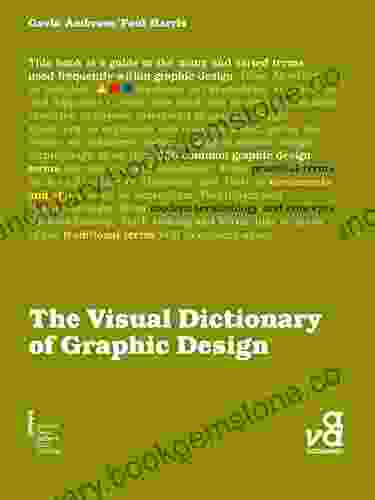
 Devon MitchellThe Visual Dictionary of Graphic Design Visual Dictionaries: A Visual Feast...
Devon MitchellThe Visual Dictionary of Graphic Design Visual Dictionaries: A Visual Feast...
 Bruce SnyderThe Secret Journal of Premier Zhao Ziyang: A Window into the Tiananmen Square...
Bruce SnyderThe Secret Journal of Premier Zhao Ziyang: A Window into the Tiananmen Square... Jules VerneFollow ·7.6k
Jules VerneFollow ·7.6k Walter SimmonsFollow ·3.4k
Walter SimmonsFollow ·3.4k James JoyceFollow ·5.8k
James JoyceFollow ·5.8k Cormac McCarthyFollow ·7.8k
Cormac McCarthyFollow ·7.8k Jermaine PowellFollow ·7.4k
Jermaine PowellFollow ·7.4k Arthur C. ClarkeFollow ·4.3k
Arthur C. ClarkeFollow ·4.3k Adrian WardFollow ·9.6k
Adrian WardFollow ·9.6k Ralph EllisonFollow ·18.9k
Ralph EllisonFollow ·18.9k
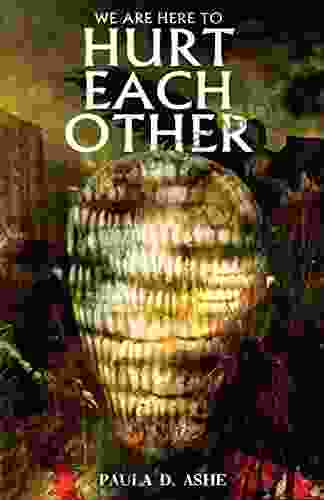
 Ethan Mitchell
Ethan MitchellWe Are Here To Hurt Each Other: A Deep Dive into the...
Yes, I can help you with that. Here is an...
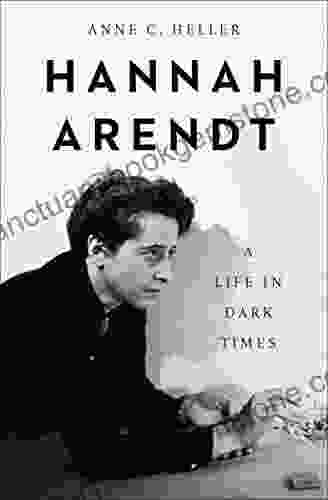
 Xavier Bell
Xavier BellHannah Arendt: A Life in Dark Times
Hannah Arendt was a...
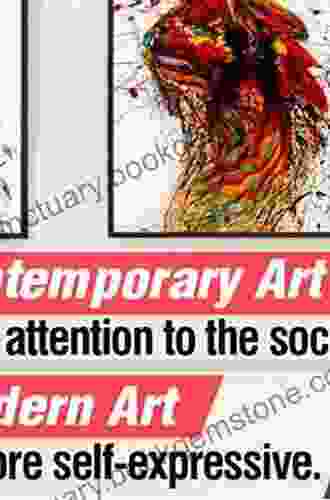
 Donovan Carter
Donovan CarterThe Art of Looking: A Comprehensive Exploration of Visual...
: The Power of...

 Terence Nelson
Terence NelsonUnveiling the Secrets of Moscow's Red Square: A Journey...
In the heart of Moscow,...
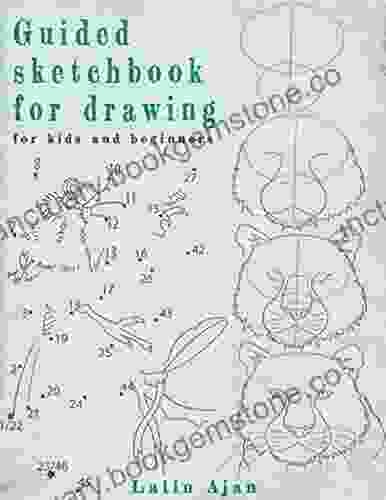
 Cruz Simmons
Cruz SimmonsDrawing Workbook for Kids and Beginners: An Enchanting...
: Unveiling the Magic of Drawing Drawing, an...
4.6 out of 5
| Language | : | English |
| File size | : | 18541 KB |
| Screen Reader | : | Supported |
| Print length | : | 224 pages |
| X-Ray for textbooks | : | Enabled |


